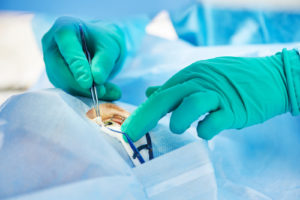
Vision Improvement Solutions to Get Rid of Reading Glasses
No one likes to feel like they’re getting older, but our bodies are constantly reminding us. That goes especially for your eyes. Our once hawk eyes have now dwindled and require reading glasses, the dreaded mark of aging eyes.
You may have once been able to read a street sign from a block away, but now you have trouble reading the small print on a cereal box. Don’t worry. You aren’t alone. In fact, chances are that if you’re over the age of 40, all your similarly aged friends are going through the exact same thing.
But there may be hope on the horizon to get rid of those pesky reading glasses: natural solutions. After all, no one wants to rely on a pair of glasses to keep doing the things we enjoy. Keep reading to find out about some vitamins and lifestyle changes that may help mitigate the symptoms of presbyopia.
Presbyopia
If you’ve recently reached middle age (over the age of 40) and notice that maybe your eyes aren’t focusing as well as they used to or you’re having trouble reading things at a close distance, then you’re probably suffering from something called presbyopia.
Presbyopia is a vision condition that will affect everyone eventually. This condition is the natural loss of elasticity in the lens of the eye. As a result of this, you’ll need glasses for activities like reading, working on the computer, sewing, cooking, reading menus, or any activity that requires near sight.
Over time, it is normal for your age to wear down your eyes. In this case, the lens of the eye becomes thicker due to a buildup of protein and loses its ability to focus because the lens won’t bend. This differs from cataracts when a protein buildup will cloud your vision.
Presbyopia does not cause vision loss; only blurred vision when doing near work like the activities mentioned above. The condition is often nothing to be worried about. It does not cause permanent damage to the eye.
Treatment
Because presbyopia does not affect the very shape of the eye like other refractive errors like nearsightedness, farsightedness, and astigmatism, bifocals are not necessary.
Instead, presbyopia is usually treated with reading glasses. These reading glasses are worn only when one needs to complete near work, as opposed to bifocals, which are worn all day long.
However, bifocals can be prescribed by your eye doctor if you wish to have a pair of glasses to wear all day long. This is a good choice for people whose jobs require a lot of near work.
Soft-lens contact lenses are another treatment for presbyopia. However, those who opt for this solution are often disappointed in the results. They report a decrease in visual acuity and a loss of depth perception.
Because presbyopia is ever-changing, you’ll need to update your prescription regularly for whichever treatment you choose. Talk to your doctor about which solution is best for you and if it’s possible to get rid of the reading glasses or not.
Natural Alternatives to Get Rid of Reading Glasses
However, there are also natural vision restoration alternatives. There are a variety of vitamins and minerals that can help you get rid of reading glasses. Additionally, some positive lifestyle choices can improve your vision as you age.
Zinc and Vitamins A, C, and E
Vitamins A, C, and E are all powerhouses when it comes to vision. Making sure you get enough of each throughout your life will help keep your vision healthy. However, if you are already feeling the effects of presbyopia, these vitamins can still help strengthen your vision. Vitamin A has been shown to prevent retinal diseases and reduce night blindness. Without zinc, though, Vitamin A isn’t very efficient. Your body uses zinc to transport vitamin A from the liver to your retinas. Making sure you get enough of both will help your body take full advantage of what these nutrients have to offer.
Vitamins C and E are powerful antioxidants, so they prevent your eyes (and other parts of your body!) from oxidizing, or deteriorating. Essentially, they help slow down aging! Adding these vitamins to your diet is a great way to both prevent presbyopia from occurring and possibly help you get rid of those reading glasses someday if it’s already developing.
Lifestyle Changes to Help Get Rid of Reading Glasses
Beyond pursuing a healthy diet, there are many lifestyle changes you can make to help get rid of reading glasses. The first is perhaps the most obvious: if you currently smoke, quit! Smoking negatively impacts vision in many ways. Even being around second-hand smoke can damage your eyes, so encourage your loved ones to quit, too. Research has linked presbyopia to smoking. So, quitting is a clear way to prevent the need for reading glasses in the first place.
Secondly, giving your eyes enough rest throughout the day can work wonders in the fight against presbyopia. So much of both our work days and leisure time is spent looking at screens these days, much to the chagrin of our vision. Spending too much time looking at the blue light of your phone, computer, and TV can cause eyestrain. The research isn’t yet clear on whether eyestrain directly causes presbyopia or whether the symptoms of presbyopia are just exacerbated by eyestrain. Either way, taking time to implement the 10-10-10 rule (resting your eyes for 10 seconds by looking at something 10 feet away every 10 minutes) can help prevent eyestrain and keep your vision clear.
Vitamins to Help Get Rid of Reading Glasses
While the jury is still out about whether adding certain vitamins to your diet or engaging in specific lifestyle changes can actually reverse presbyopia, it’s no secret that these natural options will benefit your vision in some way. An easy way to incorporate these vitamins into your diet is the Rebuild Your Vision Ocu-Plus formula, which includes vision-strengthening vitamins and minerals. And, if you are diligent, incorporating these ideas into your life just might help you get rid of reading glasses!
Our Rebuild Your Vision Ocu-Plus Formula Contains All 17 Vitamins, Minerals, and Herbal Supplements to Improve Your Eye Health!













Leave Your Reply